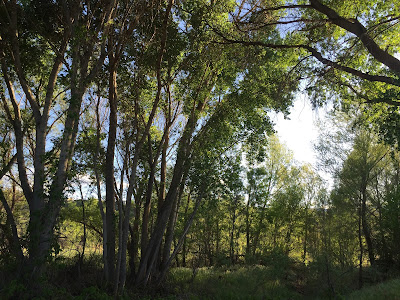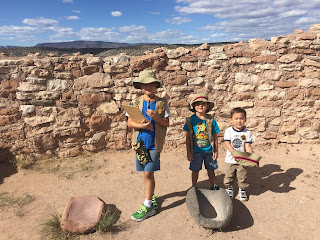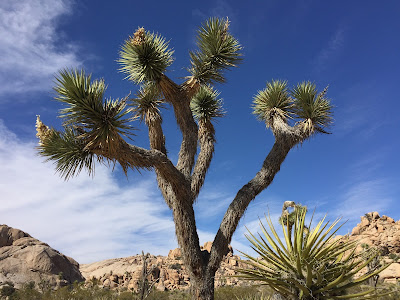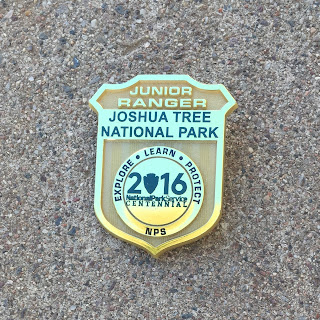Tuzigoot is a village built by the Sinagua people on top of a hill and close to the Verde river. Sinagua is Spanish (sin agua) meaning "without water" and refers to the way these people managed to survive in this high desert landscape. Tuzigoot was occupied by the same people and at the same time as Montezuma Castle, which is another national monument we've visited. The neat thing archaeologists found here were lots of BIG pots, and you can see them in the visitor center/museum. Tuzigoot has the walls standing so you can see where all the rooms were. The rooms weren't very big, but each one was actually a house for an entire family.They must have spent a lot of time outside.
The junior ranger program here is available for kids as young as 1 year old, which is great if you have little ones. The little kids mainly have to look for things. Do you see a pot? Do you see a wall? Do you see a sign? The answers for the big kids are on the trail signs around the ruin and also in the visitor center/museum exhibits. Nice badge!
Right next to Tuzigoot there is a turnoff on the road with a sign that says Verde River Access. Be sure to take this turn off and take some time to explore the river. There's a gravel parking lot with a porta-potty and a path to the river. It's cool and shady under the cottonwoods ( a nice change from being out in the sun at Tuzigoot) and the water has a shallow area perfect for kids to poke about in.
You can also hike along the river. It's easy to see why the Sinagua people liked it around here!
 |
| Cool and shady under the cottonwood trees. |













